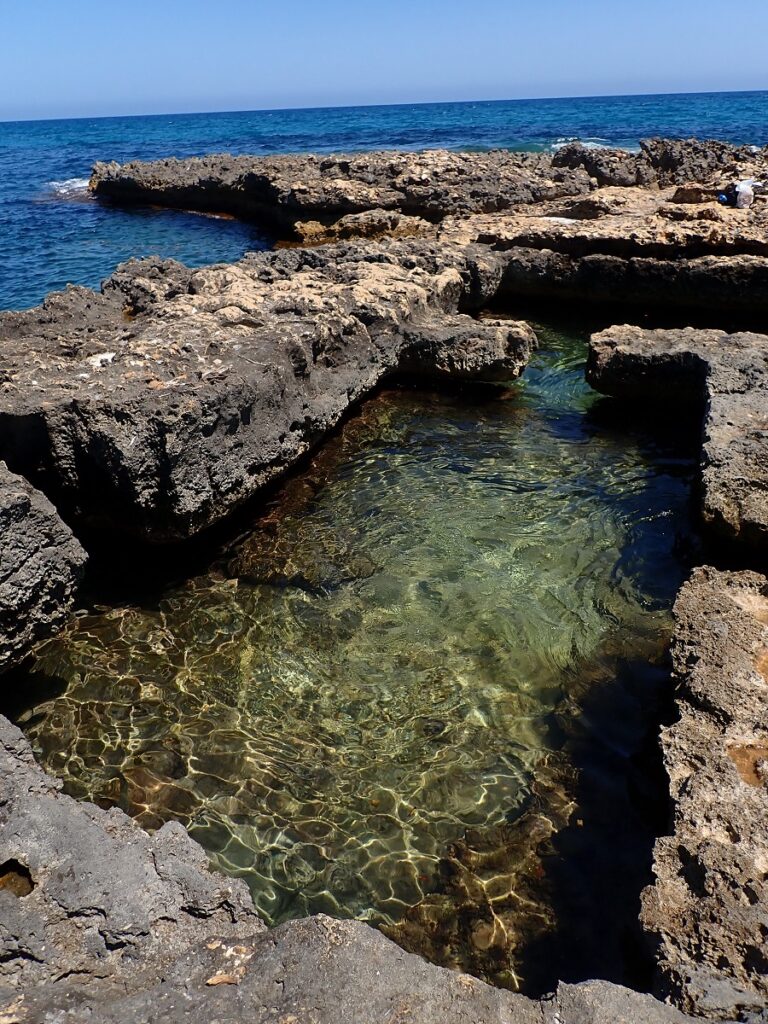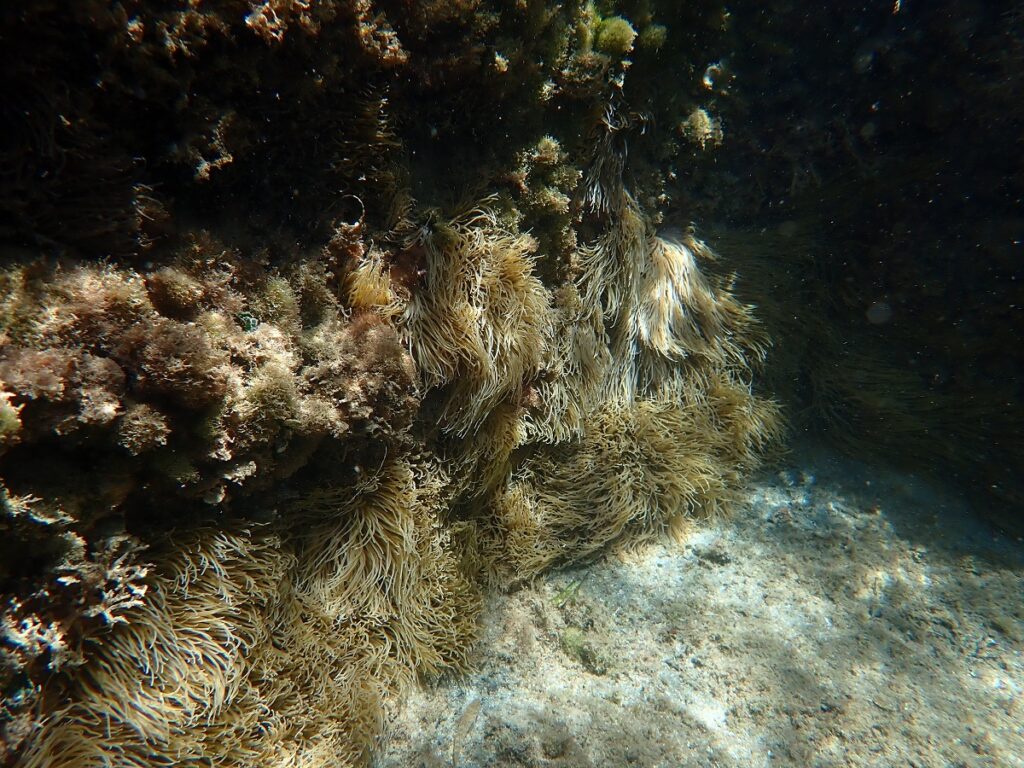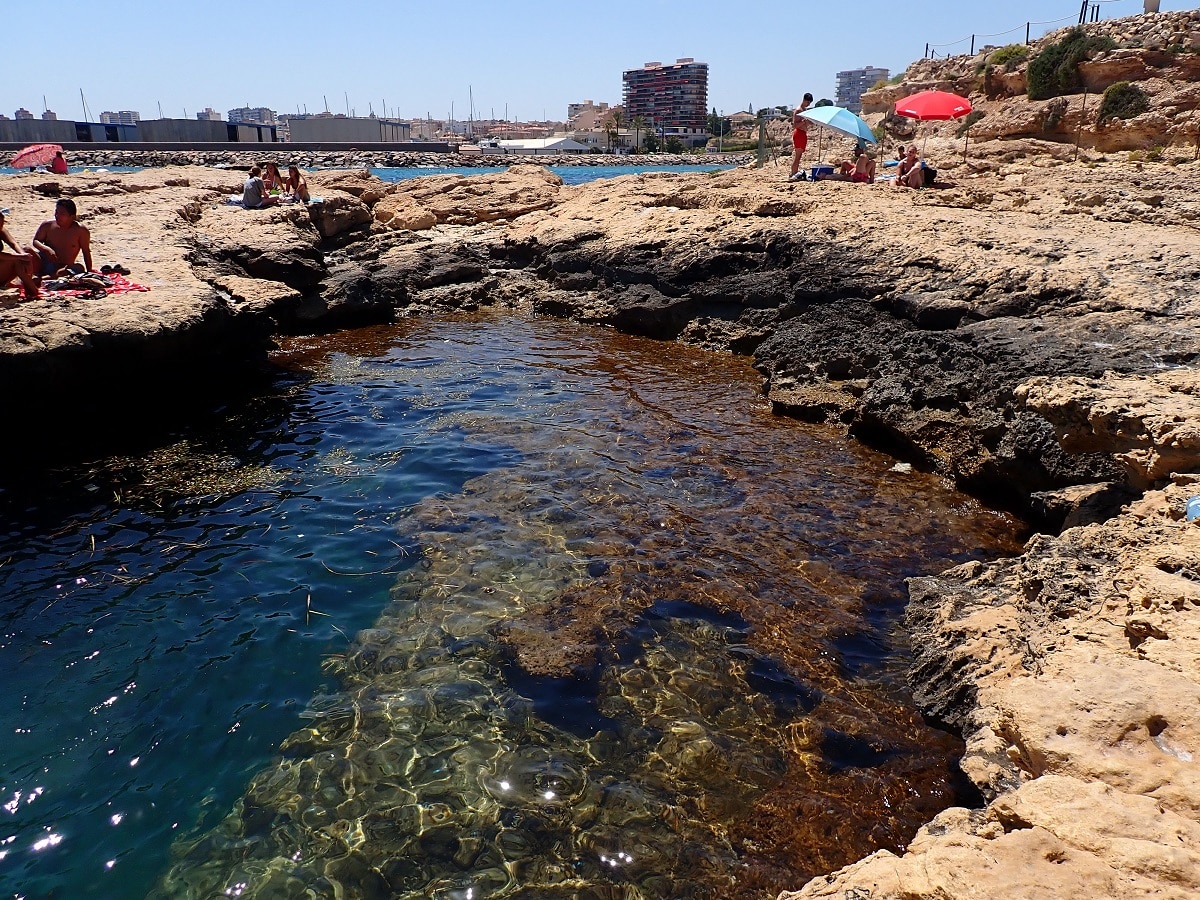Spending your holidays in lovely El Campello on the Costa Blanca in Spain, or maybe in nearby Alicante? If the weather is nice (and there’s about a 99% chance it will be), leave the chaos of the city beaches behind and head to the Baños de la Reina. It’ll be much quieter and great for snorkel, plus there’s lots to see for archaeology buffs.
Below, you’ll find everything you need to know about this beach and how to make the most of your visit—explained by a local.
What do the Baños de la Reina have to offer?
Archaeological site
Beach aside, the Baños de la Reina are actually first and foremost an archaeological site. The name means “the Queen’s Baths”, and indeed, according to the legend, a beautiful Moorish queen used to take her baths here.
In reality, the “baths” actually formed part of a Roman fish farming operation! In the 1st and 2nd centuries A.D, the islet contained a villa, a simple bathing facility, and lots of fish—which were easy to raise given the constant access to fresh seawater.
The Romans aren’t the only people to have inhabited this site, though. Folks already lived there in the Copper and Bronze ages, leaving traces like burial sites and ceramic vases behind. After that came the Iberians, who built temples, homes, a factory to produce amphoras, and more.
At some point, following an earthquake, the islet’s access to the mainland was severed. It was reconnected in 1943. Unfortunately this was done using dynamite, and part of the prehistoric remains were apparently lost.
Nowadays, the site, called Illeta des Banyets in the local dialect, is managed by the MARQ, which also runs the archaeological museum in Alicante city (well worth a visit!). You can visit the excavations on the cheap: it was €2 last time I checked. Do have a look at the opening hours first, though.

Snorkel (kid-proof!)
Taking a peek at the archeological site will hardly take all day (more like an hour). If you’re going in summer, you’ll be dying to take a dip in the clear water surrounding the islet afterward. Good news: this place is perfect for snorkel.
You can enter the water to take a peek at the sealife pretty much anywhere you want on the islet and its access road. I recommend, however, making your way to the tip (though this does involve some mild rock clambering) and checking out the actual baths.
The great thing about these former fish enclosures is that they’re shallow and protected from the waves. The ideal place to take the little ones for their first mini snorkel trip! Do be sure to get them to wear protective shoes, because the rocks can be sharp and there may be sea urchins.
Amenities
There’s not much in the way of amenities present at this beach. No shower, so bring a bottle of tap water to rinse the salt off your face. There was a portable toilet when I last went, but who knows if that will stay around! The islet is unfortunately not really accessible to people with limited mobility.
Parking is available. If you want a bite to eat, there is a restaurant next to the clearly visible nearby tower. It’s called La Cova—I’ve had dinner there and quite liked the food.


How to get to Baños de la Reina
Unlike some of the coves on the Costa Blanca, this one’s easy to reach. Pop the following into your car GPS: “Platja dels Banyets de la Reina”.
When you’re almost there, keep an eye out for the historic tower. Approaching it, on an offshoot of Calle Sant Bartomeu street, you’ll spot some free parking spaces. If those are full, there’s also parking available in front of the restaurant.
Tip: Make sure you’re really going to El Campello. There’s also a place called Baños de la Reina in Calpe. It’s actually just as nice, but it’s a 40-minute drive from Campello! In fact, there’s even a third spot with the same name, located just over an hour away in the town of Jávea.
Snorkeling the Baños de la Reina
Alright, snorkelers! As I mentioned, you can enter the water anywhere you want on this islet, but here’s how I do it when I go:
- Arrive early if it’s high summer, because it will get crowded.
- Make your way to the baths at the tip of the islet.
- Suit up and jump into the largest of the baths.
- Spend some time exploring all the baths (some are quite shallow).
- Make your way out of the baths and explore along the islet. You can choose based on the ocean conditions which side you want to see.
Another option would be to enter the water right at the start of the islet and then make your way all along it, checking out the baths on the way. I only recommend this if you’ve got some experience and conditions are good, though, because the sea at the tip of the islet is deepish and can get rough.
The seafloor around the Baños de la Reina is rocky and features patches of Poseidonia seagrass. It sustains all the familiar faces of the Mediterranean:
- Ornate wrasse (Thalassoma pavo)
- Fried egg jellyfish (Cotylorhiza tuberculata; does not sting)
- Rockpool shrimp (Palaemon elegans)
- Cow bream (Sarpa salpa)
- Saddled seabream (Oblada melanura)
- Common two-banded seabream (Diplodus vulgaris)
- Common octopus (Octopus vulgaris)
- Various crab species
- Various blenny species
- Anemones and sea urchins
My favorite inhabitant is the regal sea goddess nudibranch (Felimare picta). The yellow color morph is to be found in the baths, the only place I’ve managed to spot it so far!
In late summer and early fall, look out for stinging jellyfish like the mauve stinger.
Tip: If it’s been windy lately, there’s a chance the beach and the shallows are full of dead seagrass. This unfortunately kills underwater visibility. Normal in the Mediterranean, but still annoying!




Other snorkel beaches on the Costa Blanca
Although the Costa Blanca isn’t my favorite place for snorkel in Spain (that would be the Costa Brava), it’s still pretty good. There are loads of nice coves with crystal clear waters.
If you’ve got a few days, I recommend visiting my personal favorites:
- Tabarca island
- Benidorm island
- Cabo de las Huertas (partially nudist)
- Racó del Conill (nudist)
- Cala Tío Ximo
If you have any more questions about the Baños de la Reina or if you want to share your own experiences visiting this unique beach and archaeological site, don’t hesitate to leave a comment below!

